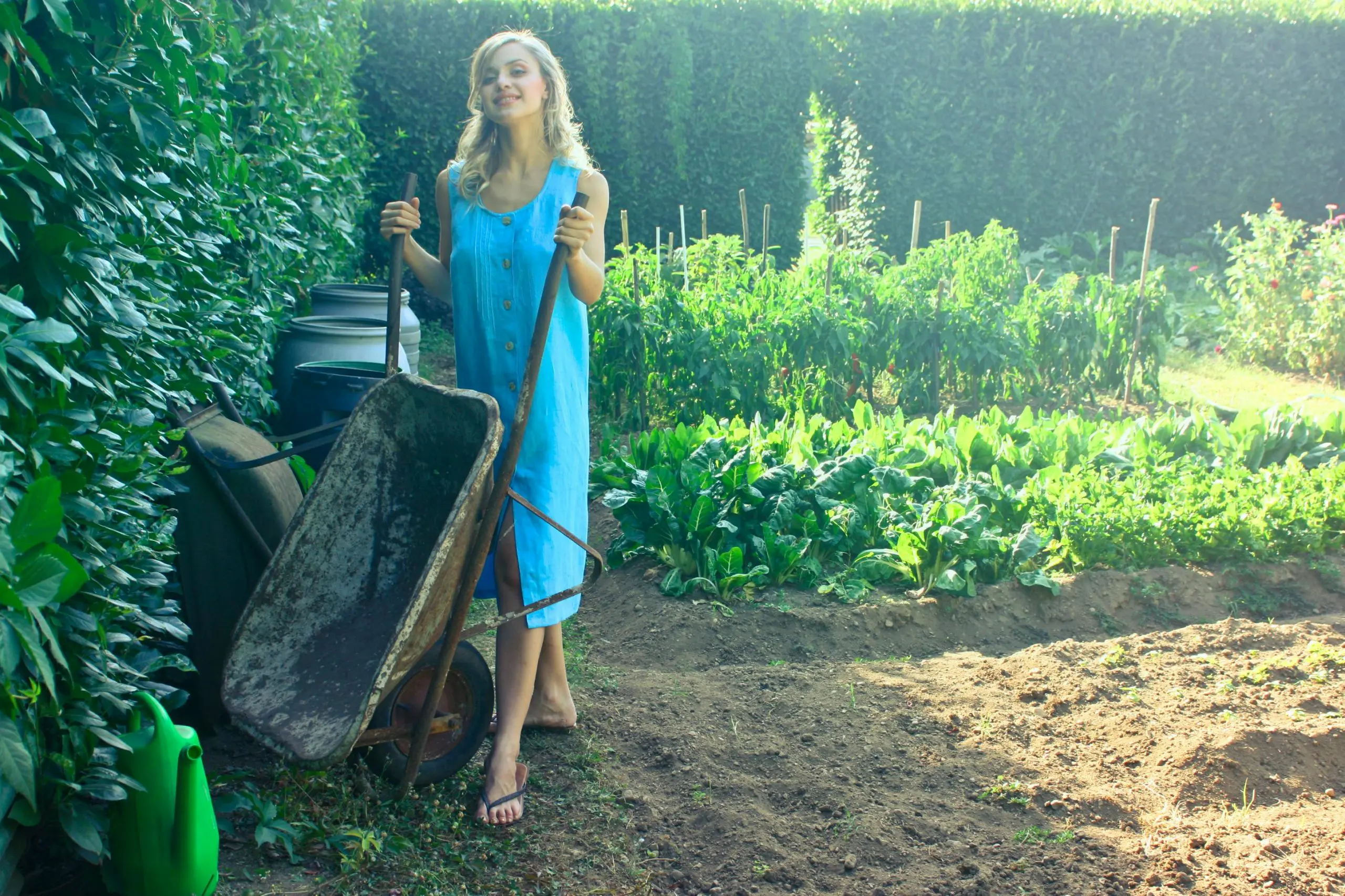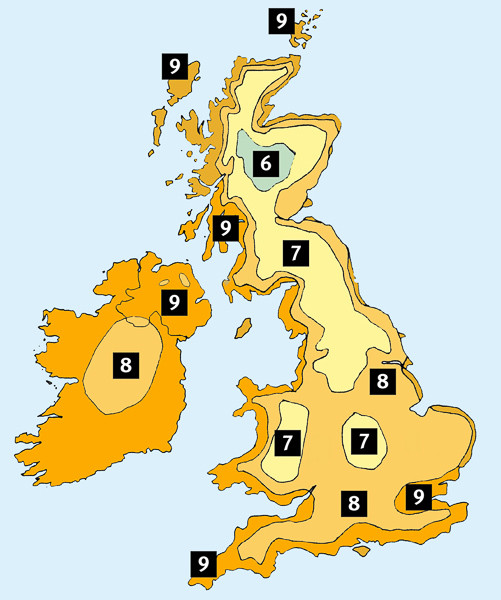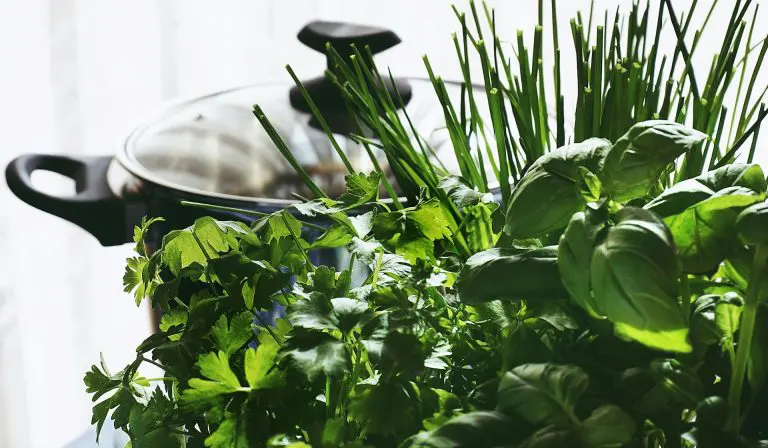Hardiness Zones In The UK
UK Hardiness Zones
Gardening success often hinges on understanding your local environment, and one key aspect of this is the concept of hardiness zones. These zones, defined by climate conditions such as the minimum temperatures a region experiences, help gardeners determine which plants are most likely to thrive in their area. By understanding hardiness zones, you can select plants that are well-suited to your local climate, ensuring a healthier garden and reducing the need for excessive maintenance. In essence, knowing your hardiness zone is a crucial step in making informed decisions for a flourishing garden.

What Are Hardiness Zones?
Hardiness zones are a way to categorise different geographical areas based on their climate conditions, specifically the average minimum temperatures they experience during winter. This system helps gardeners and horticulturists understand which plants are likely to survive and thrive in their particular region. By referring to hardiness zones, you can make more informed choices about what to plant, reducing the risk of your plants being damaged by cold weather.
The concept of hardiness zones has been around for several decades. It was first developed in the United States by the United States Department of Agriculture (USDA) in the early 1960s. The aim was to create a clear, practical guide for farmers and gardeners to select plants suitable for their climate. Since then, the concept has been adopted and adapted by other countries, including the UK, to fit their specific climates.
Hardiness zones are determined by analysing long-term climate data, particularly focusing on the lowest temperatures typically experienced in a region during the winter months. These temperatures are crucial because they can significantly impact plant survival. By mapping out these zones, we can create a reference that helps predict which plants will withstand the cold in any given area. This system is invaluable for anyone looking to cultivate a successful and resilient garden.
Hardiness Zones in the UK
The UK’s climate is famously varied, with its weather influenced by a combination of factors such as coastal proximity, altitude, and prevailing winds. This diversity in climate conditions means that understanding hardiness zones is particularly important for UK gardeners. The hardiness zones in the UK generally range from 7 to 9, each indicating different average minimum temperatures that plants need to withstand.
Zones 7 to 9 cover most of the UK, with Zone 7 being the coldest and typically found in more inland and elevated areas, such as parts of Scotland and northern England. Zone 8 encompasses much of the central UK, experiencing milder winters compared to Zone 7. Zone 9, the mildest, is found in southern coastal areas and parts of the southwest, where winters are generally more temperate.
Several factors influence these hardiness zones in the UK. Coastal areas tend to have milder winters due to the moderating effect of the sea, which keeps temperatures more stable. Conversely, inland areas can experience more extreme temperatures. Altitude also plays a significant role; higher elevations generally experience colder temperatures, which can shift a location into a lower hardiness zone. Wind exposure and urban heat islands, where cities tend to be warmer than their rural surroundings, further affect these zones. Understanding these nuances helps UK gardeners choose plants that will thrive in their specific conditions, ensuring healthier and more resilient gardens.
Detailed Breakdown of UK Hardiness Zones
Keep in mind this map are mostly guidelines as they do not factor in any potential micro-climates, precipitation, humidity, summer heat tolerances etc.

USDA Planting Zones
The USDA plant hardiness zones are the most widely used system globally to determine planting zones. The entirety of the UK falls within USDA planting zones 6-9, which are based on average winter temperatures. Zone 6 areas in the UK, where winter temperatures can drop below -17.8°C, are quite rare. Similarly, few areas fall into zone 7, where temperatures can drop below -12.2°C. The majority of the UK lies in zones 8 or 9.
- USDA Zone 7: -17.8°C to -12.2°C
- USDA Zone 8a: -12.2°C to -9.4°C
- USDA Zone 8b: -9.4°C to -6.7°C
- USDA Zone 9a: -6.7°C to -3.9°C
- USDA Zone 9b: -3.9°C to -1.1°C
A few regions in the far south of the UK are classified as Zone 10a, where winter temperatures can fall to between -1.1°C and 1.7°C.
How to Use Hardiness Zones in Your Garden Planning
Using hardiness zones in your garden planning can significantly increase your gardening success. Here’s how you can make the most of this information:
Tips for Selecting Plants Based on Your Hardiness Zone
- Know Your Zone: First, identify which USDA hardiness zone your garden falls into. This will help you understand the typical minimum winter temperatures in your area.
- Choose Appropriate Plants: Select plants that are rated for your specific zone. For example, if you are in zone 8, look for plants that can withstand temperatures as low as -12.2°C. Plant tags, seed packets, and gardening catalogues often provide this information.
- Consider Microclimates: Even within your zone, microclimates can exist. Areas close to buildings, under trees, or on slopes may have slightly different conditions. Take these into account when choosing and placing your plants.
- Look for Hardiness Labels: Many plants come with labels indicating their hardiness zones. Use these labels as a guide to ensure you’re selecting plants that will thrive in your specific climate.
- Experiment with Marginal Plants: If you’re feeling adventurous, you can try growing plants that are just outside your hardiness zone. Sometimes, with a little extra care, these plants can thrive in slightly warmer or cooler zones.

Adjusting Gardening Practices According to Your Zone
- Timing Your Planting: In cooler zones, start seeds indoors to extend the growing season. In warmer zones, you can often plant earlier in the spring and enjoy a longer growing season.
- Protecting Plants in Winter: In zones where temperatures can drop significantly, consider using mulch, frost cloths, or other protective measures to shield your plants from extreme cold.
- Watering Practices: Adjust your watering schedule according to the climate of your zone. In hotter zones, more frequent watering may be necessary, while in cooler zones, overwatering can be a concern.
- Soil Preparation: Ensure your soil is well-prepared for the plants suited to your zone. This might involve adding compost to improve soil structure or adjusting pH levels to match the needs of specific plants.
- Monitor Weather Patterns: Stay informed about local weather forecasts, especially during the transition seasons. Unexpected frosts or heatwaves can affect your plants, and being prepared can help mitigate damage.
- Seasonal Adjustments: Modify your gardening practices with the seasons. For example, in zones with harsh winters, focus on hardy perennials and winter crops. In milder zones, you can grow a wider variety of plants year-round.
By understanding and utilising your hardiness zone, you can select plants that are more likely to thrive in your garden and adjust your gardening practices to suit your local climate. This knowledge will help you create a more resilient and productive garden.
Plants Suitable for USDA Zones 7 and 8 (North East England)
Perennials
- Black-eyed Susan (Rudbeckia hirta)
- Hosta (Hosta spp.)
- Daylilies (Hemerocallis spp.)
- Lavender (Lavandula spp.)
- Peonies (Paeonia spp.)
- Coneflower (Echinacea spp.)
- Russian Sage (Perovskia atriplicifolia)
- Sedum (Sedum spp.)
Shrubs
- Hydrangea (Hydrangea spp.)
- Azalea (Rhododendron spp.)
- Lilac (Syringa spp.)
- Forsythia (Forsythia spp.)
- Boxwood (Buxus spp.)
- Spirea (Spiraea spp.)
- Rhododendron (Rhododendron spp.)
- Butterfly Bush (Buddleja davidii)
Trees
- Dogwood (Cornus spp.)
- Redbud (Cercis canadensis)
- Maple (Acer spp.)
- Magnolia (Magnolia spp.)
- Cherry Blossom (Prunus serrulata)
- Japanese Maple (Acer palmatum)
- Crape Myrtle (Lagerstroemia indica)
- Hawthorn (Crataegus spp.)
Vegetables
- Tomatoes (Solanum lycopersicum)
- Peppers (Capsicum spp.)
- Carrots (Daucus carota)
- Lettuce (Lactuca sativa)
- Beans (Phaseolus vulgaris)
- Broccoli (Brassica oleracea var. italica)
- Spinach (Spinacia oleracea)
- Onions (Allium cepa)
Herbs
- Thyme (Thymus vulgaris)
- Rosemary (Salvia rosmarinus)
- Oregano (Origanum vulgare)
- Sage (Salvia officinalis)
- Basil (Ocimum basilicum)
- Chives (Allium schoenoprasum)
- Mint (Mentha spp.)
- Parsley (Petroselinum crispum)
These plants are well-suited to the conditions typically found in USDA zones 7 and 8, offering a mix of colourful flowers, hardy shrubs, versatile trees, productive vegetables, and aromatic herbs to enhance your garden.
Conclusion
Understanding and utilising hardiness zones is crucial for successful gardening. These zones provide valuable information about the average minimum winter temperatures in your area, helping you select plants that are more likely to thrive in your specific climate. By choosing plants suited to your hardiness zone, you can reduce the risk of plant failure and increase the overall health and productivity of your garden.






![Gardening For Beginners [Top 10 Tips]](https://www.maxwellsdiy.co.uk/wp-content/smush-webp/2024/04/top_10_tips_for_gardening_beginners-768x512.jpg.webp)

